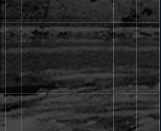|
This
was understood very well by Ricardo García when he founded
the Alerce recording label in 1976. Part of what he did was clandestine,
part of it went to the public. He distributed Silvio Rodríguez,
the internationally popular Cuban singer, without the dictatorship
finding out who Silvio Rodríguez was. Suddenly, the entire
country was singing "Ojalá," which he had written.
The Chilean version of the song was recorded by Gloria Simonetti,
whose political affiliations were of the far right. Verdugo describes
the almost unbelievable situation:
Gloria
Simonetti sang "Ojalá" on all the radio stations
and it became the number one song of the year. Everyone asked,
"Who composed such a wonderful song?" "Silvio Rodríguez."
"And who is Silvio Rodríguez?" "An anti-Castro
Cuban," someone would say, covering up who he really was,
"who, when he says, `I hope he dies,’ he’s saying
that he hopes that Castro dies." No one knew that Rodríguez
was in fact one of Cuba’s most renowned popular recording
artists, or that Ricardo García had brought the recording
of "Ojalá" to Chile. And from then on, Silvio
Rodríguez, Pablo Milanés, and the re-releases of
Violeta Parra fed us from underneath, underneath, and through
music we all knew who we were. Not through politics. Through music.
The
following accounts are excerpts from the more than one hundred interviews
I made between 1994 and 1999 for a book I am writing, Symbols
of Resistance: A Chilean Legacy, to tell the artists’ story
-- a story reaffirming that during times of fear, social inequity,
and political conflict, artists can and do influence political process
and public opinion.
JOAN JARA , Dancer, teacher
[Joan Jara was married to the well-known singer Victor Jara,
who was killed by machine-guns at the Chile Stadium three days after
the coup. Earlier this year, that stadium was renamed the Victor
Jara Stadium and was turned over to the Victor Jara Foundation in
Santiago as a venue for cultural programs.]
From my point of view, the Chilean artists in exile played a tremendously
important role in creating awareness internationally about what
was happening in Chile. They acted as the living image of Chile.
That was certainly true in England, where I was living.
I think more than anything, the music of Chile was a motivating
force for solidarity. I have an intimate experience of how the spirit
of Victor and his music made people want to know more about Chile.
First of all, the story. But then, through the songs, and how the
music spread in spite of always being in Spanish. People understood...it
was a way of communicating. So many people who went to the first
Chilean concert in Queen Elizabeth Hall in 1974 became committed
and spent years in the solidarity movement for Chile. So many people.
In New York there was an extraordinary concert at the Felt Forum
that Phil Ochs organized, where Bob Dylan made an appearance. That’s
where the song for Victor had its first performance, the poem that
Adrian Mitchell, the British poet, had written. He had told me,
"I can imagine this being sung to a Woodie Guthrie tune."
I had it in my pocket that night. And backstage I dared to say to
Toshi Seeger, "I’ve got this poem," and I showed
it to her. I knew that Arlo Guthrie was going to perform that night,
and Toshi said, "Give it to me, I’ll take it to Arlo."
After reading it, he said, "Oh, yeah, I can imagine what this
goes to." So he invented a tune and performed it for the first
time there at that concert. Later he recorded it. "Victor Jara
of Chile, Lived like a shooting star, He sang for the peoples of
Chile..." A very beautiful song, very, very beautiful.
|
|

